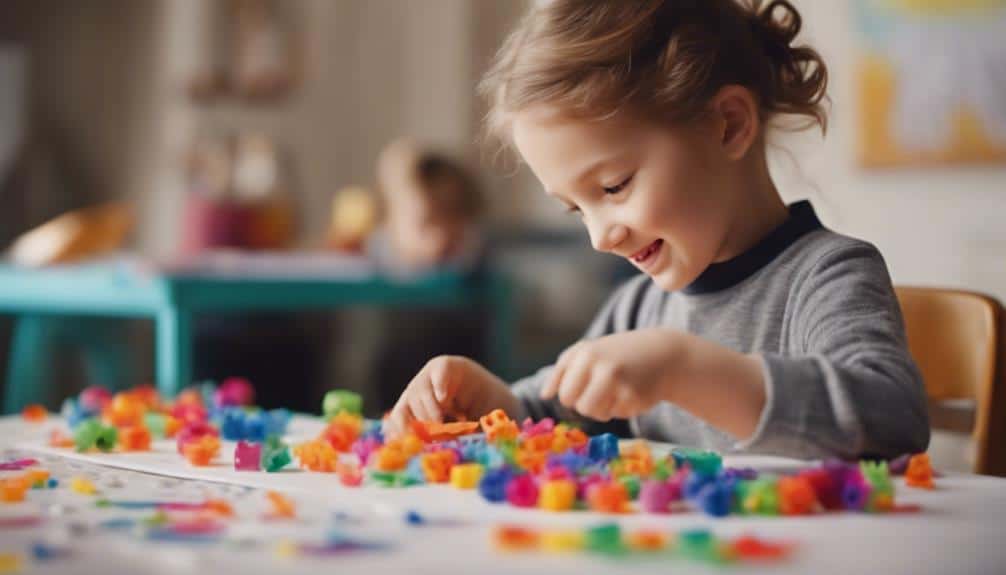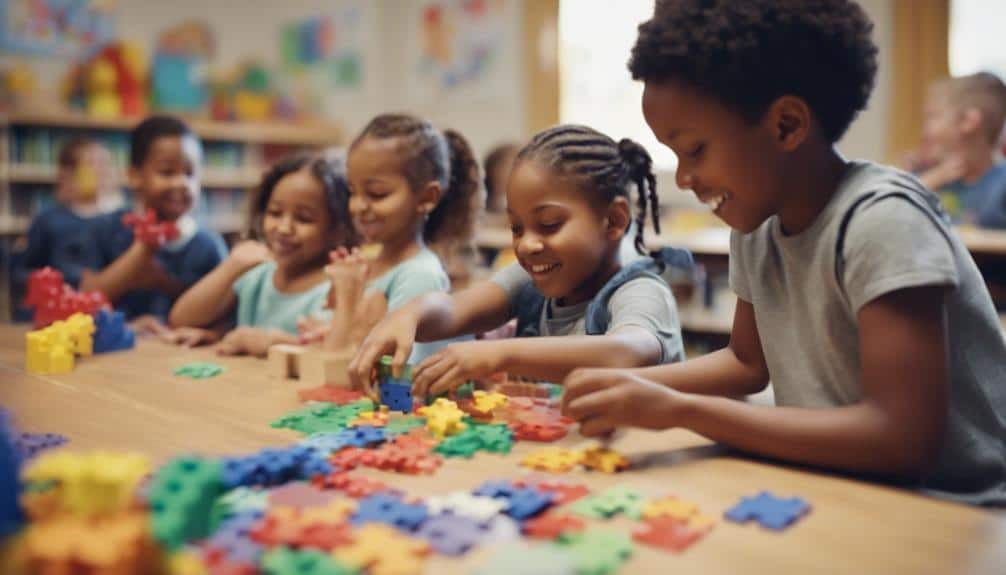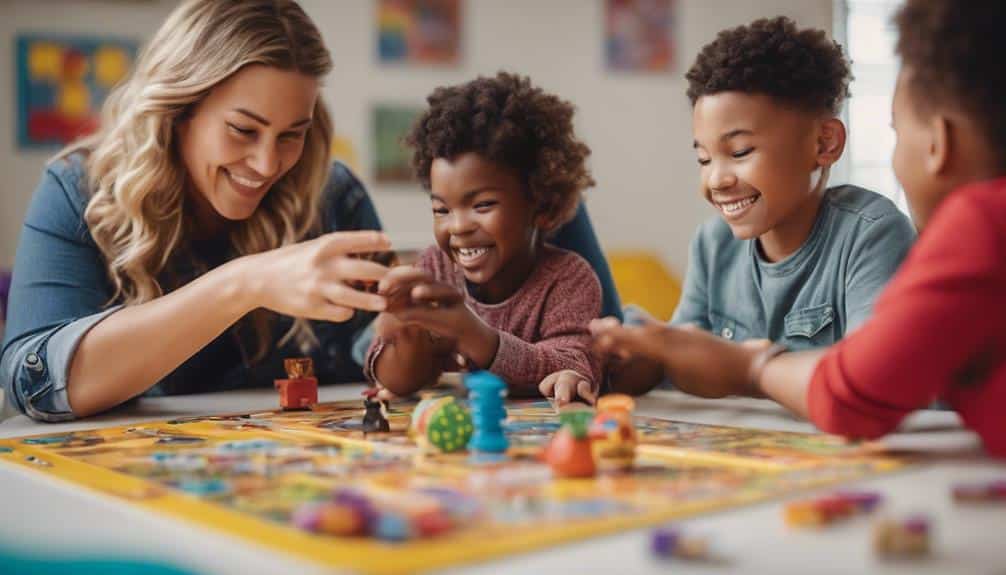The significance of pediatric occupational therapy (OT) in maximizing academic success cannot be overstated, particularly for children facing developmental or physical challenges. By applying specialized strategies encompassing sensory integration and cognitive development, pediatric OT tips can play a pivotal role in equipping these young learners with the necessary skills to thrive in an educational setting. However, the depth and efficiency of these interventions rely heavily on a nuanced understanding of each child’s unique needs and the collaboration between therapists, families, and educators.
As we explore the multifaceted approaches employed in pediatric OT, one might ponder how these tailored interventions can be optimized to support academic achievements and foster long-term success and well-being in children’s lives.
Key Takeaways
- Pediatric OT enhances academic success by improving cognitive, sensory, and motor skills.
- To boost learning, interventions target handwriting, fine motor skills, and sensory processing.
- Structured routines and adaptive tools in OT support organizational skills and academic engagement.
- OT promotes emotional regulation, social skills, and problem-solving, laying a foundation for lasting academic achievement.
Understanding Pediatric OT
Pediatric occupational therapy enables children to overcome diverse cognitive, physical, sensory, and motor challenges that impede their daily and academic activities. Pediatric OT offers a foundational support system that fosters academic success and overall developmental progress by focusing on nurturing essential skills. It uniquely addresses sensory processing disorders, which significantly impact a child’s ability to manage fine motor skills and coordination, which are critical for successful learning environments.
Through tailored interventions, Pediatric OT aims to enhance cognitive abilities, including attention, memory, and problem-solving skills, vital components of effective learning and academic performance. Early intervention is a cornerstone of Pediatric OT, advocating for identifying and supporting children at risk of developmental delays as soon as possible. This proactive approach ensures that children are given the tools and strategies to reach their developmental milestones, laying a solid foundation for academic success.
Incorporating sensory integration techniques, Pediatric OT practitioners help children decode and navigate the complexities of sensory stimuli, enabling them to participate more fully in academic and daily activities. This strategic focus on sensory integration, fine motor skills, and coordination underscores the importance of Pediatric OT in supporting children’s journey toward academic achievement and developmental success.
Enhancing Fine Motor Skills
Improving fine motor skills is a critical aspect of occupational therapy, aiming to empower children with the skills necessary for everyday and academic tasks. Occupational therapy enhances hand strength, agility, and coordination through targeted exercises. These exercises are designed to fortify hand muscles, improving grip and control. This heightened control facilitates better-manipulating objects, an essential skill for academic success and daily living.
Adaptive tools, including ergonomic writing instruments, play a pivotal role in this therapeutic process. While primarily utilized to improve handwriting legibility, these tools also support the overall development of fine motor skills by reducing strain and enhancing comfort during tasks. Furthermore, sensory integration techniques are employed to refine hand-eye coordination. This is crucial for accomplishing precise tasks such as drawing or handling small objects, enabling children to execute these activities more accurately and confidently.
Boosting Handwriting Abilities

Building on the foundation of enhanced fine motor skills, occupational therapy further focuses on specific strategies to elevate handwriting abilities in children. Recognizing the critical role handwriting plays in academic success and self-esteem, occupational therapy services employ a multifaceted approach to address this skill. Through targeted interventions, children can significantly improve their handwriting, which supports their overall academic journey and developmental milestones.
Occupational therapy services prioritize:
- Hand strength and coordination through specialized exercises boost the ability to maneuver pencils and pens easily.
- Finger dexterity enhancement ensures children can perform the intricate movements required for letter formation.
- Grip enhancement techniques, utilizing ergonomic tools and adaptive strategies to foster a comfortable and efficient writing posture.
- Sensory integration techniques to refine hand-eye coordination are crucial for achieving legibility and precision in handwriting.
- Early intervention in handwriting difficulties, employing a combination of specialized exercises, ergonomic tools, and adaptive strategies to lay a strong foundation for academic success.
These targeted strategies underscore occupational therapy’s holistic role in addressing handwriting challenges and fostering a sense of achievement and confidence in young learners.
Improving Sensory Processing
Addressing sensory processing challenges through occupational therapy offers a pathway to enhancing a child’s engagement and performance in academic settings. Sensory processing difficulties can significantly hinder a student’s ability to participate in and benefit from academic tasks. By identifying and addressing these challenges early, occupational therapy interventions can be crucial in setting the foundation for academic success.
Occupational therapists employ sensory integration techniques designed to improve sensory processing skills, which are critical for tasks requiring focus and attention. These interventions are tailored to each child’s needs to support their ability to process and respond to sensory information more effectively. This targeted approach not only aids in the child’s academic performance but also contributes to positive learning outcomes by fostering an environment where they can thrive.
Early intervention is critical when dealing with sensory processing disorders. By implementing occupational therapy interventions at an early stage, children are better prepared to face the demands of the classroom. This proactive approach ensures that sensory processing challenges do not hinder a child’s learning and academic achievements, maximizing their potential for success in educational endeavors.
Strengthening Visual Perception

Just as enhancing sensory processing is vital for academic engagement, strengthening visual perception is crucial in how effectively a child can interpret and utilize visual information in educational settings. Pediatric occupational therapy (OT) focuses on developing critical visual perception skills that underpin a child’s ability to perform academically. By improving these skills, children can succeed tremendously in reading, comprehension, and mathematical problem-solving, essential components of their educational journey.
Effective OT interventions aim to enhance a child’s ability in:
- Visual discrimination, to differentiate between letters, numbers, and shapes.
- Visual memory facilitates the retention and recall of visual information.
- Visual-spatial skills, enabling the understanding of the spatial relationship between objects.
- Visual closure allows a child to recognize an object, even partially hidden or incomplete.
- I am reading fluency and mathematical problem-solving through improved scanning, tracking, and copying abilities.
These targeted interventions support academic success and empower children to navigate educational settings more independently, fostering a sense of competence and confidence. Strengthening visual perception is a fundamental step toward unlocking a child’s full academic potential, ensuring they have the tools to thrive in a visually rich educational landscape.
Developing Executive Functions
In the quest for academic excellence, developing executive functions is a pivotal area where pediatric occupational therapy can significantly impact children, equipping them with the organizational and planning skills essential for navigating their educational journey. Executive functions are central to academic success, governing abilities such as time management, organization, planning, and self-monitoring.
Occupational therapy interventions meticulously target these executive functions. Visual schedules empower children to manage their time effectively, ensuring they remain on track with their tasks and assignments. This visual aid is not just a tool for time management but also a beacon of independence, allowing children to take charge of their daily activities.
Furthermore, task breakdowns enhance organizational skills, transforming overwhelming assignments into manageable steps. This simplifies the task and instills a sense of accomplishment with each step completed. Goal setting, another vital strategy, fosters planning skills and self-monitoring, enabling children to set realistic academic objectives and track their progress.
Through these tailored occupational therapy interventions, children are equipped with the foundational executive function skills, laying the groundwork for lasting academic success.
Encouraging Play-Based Learning

In pediatric occupational therapy (OT), play-based learning emerges as a pivotal approach, blending enjoyment with essential skill development. This method cultivates attention, problem-solving, and social abilities through engaging activities and personalizes interventions to align with each child’s unique interests and therapeutic objectives. As we explore the benefits of play therapy and strategies for engaging in play, we must recognize how these practices create a nurturing environment that encourages children to embrace learning and skill acquisition with enthusiasm.
Benefits of Play Therapy
Through the lens of pediatric occupational therapy, play therapy emerges as a pivotal approach for fostering skill development in children by leveraging engaging, child-centered activities. This evidence-based method is critical in facilitating developmental gains in a therapeutic yet fun environment.
- Encourages creativity and problem-solving skills through imaginative play
- Enhances social interaction by promoting cooperative play scenarios
- Builds confidence and improves communication in a supportive setting
- Aids in emotional regulation and stress management through playful expression
- Motivates children to participate actively, making learning new skills enjoyable
Strategies for Engaging Play
Adopting play-based learning strategies within pediatric occupational therapy sessions can significantly enhance the development of crucial skills in children, offering a foundation for academic and personal growth. Through a child-centered approach, therapists design tailored activities that target specific developmental areas, such as cognitive skills, motor functions, and social interaction. This methodology fosters a rich environment for skill-building and increases children’s motivation and participation. Furthermore, play-based interventions are instrumental in improving attention, academic performance, and emotional regulation. By engaging children in enjoyable and meaningful play, therapists can effectively support their journey towards achieving significant milestones, ensuring a holistic approach to their development and laying the groundwork for lifelong learning and success.
Supporting Emotional Regulation
Supporting emotional regulation within pediatric occupational therapy is foundational for a child’s academic and social success. Identifying emotional triggers and employing calming techniques are critical strategies therapists use to help children manage their emotions effectively. These methods enhance focus and attention in academic settings and empower students to constructively navigate the complexities of social interactions and conflicts.
Identifying Emotional Triggers
Identifying emotional triggers enables children to manage their responses and behavior in educational environments. Recognizing these triggers prevents meltdowns and distractions and enhances a child’s ability to engage in learning activities without the hindrance of sensory overload, frustration, or anxiety. By addressing emotional triggers, pediatric occupational therapy supports the development of tailored coping strategies, fostering emotional regulation, resilience, and confidence. This, in turn, boosts academic performance, focus, and self-control.
- Recognizing emotional triggers to prevent meltdowns and outbursts
- Understanding the root causes, such as sensory overload or anxiety
- Developing targeted coping strategies
- Enhancing focus and self-control through emotional regulation
- Building resilience and confidence to navigate academic settings
Strategies for Calming Techniques
In pediatric occupational therapy, implementing calming techniques plays a pivotal role in assisting children to regulate their emotions, enhancing their focus and ability to participate fully in academic tasks.
| Technique | Purpose | Application in Pediatric OT |
|---|---|---|
| Deep Breathing | Reduces stress, promotes relaxation | Taught as a method to focus before academic tasks |
| Mindfulness Activities | Enhances present-moment awareness, reduces anxiety | Used to ground children in stressful situations |
| Sensory Tools | Aids in emotional regulation, reduce sensory overload | Integrated into daily routines for self-soothing |
Through these strategies, pediatric OT offers a compassionate approach to support emotional regulation. Teaching children calming techniques allows them to manage their emotions, improving stress reduction and academic performance.
Promoting Social Skills

How does pediatric occupational therapy (OT) enhance social skills in children, fostering their academic and interpersonal success? Pediatric OT meticulously addresses the critical components necessary for nurturing well-rounded individuals by focusing on developing vital social skills. These skills are foundational for academic achievement, building meaningful relationships, and navigating the complexities of social interactions. Through a compassionate and structured approach, OT practitioners work to overcome communication challenges and refine social engagement, ensuring children are equipped with the tools they need for a successful and fulfilling life.
Critical areas targeted by pediatric OT include:
- Communication Challenges: Empowering children to express themselves clearly and understand others.
- Enhancing Social Interactions: Facilitating positive engagements with peers and adults.
- Peer Relationships: Fostering friendships and cooperative play.
- Emotional Regulation: Teaching children to manage their emotions effectively.
- Empathy, Teamwork, and Conflict Resolution: Building understanding, collaboration, and problem-solving skills.
Integrating OT Strategies at Home
Integrating pediatric occupational therapy (OT) strategies into the home environment can significantly enhance a child’s abilities to focus, organize, and succeed academically. Parents and caregivers can improve a child’s attention and concentration on academic tasks by implementing sensory integration activities. These activities are essential for children who may struggle with sensory processing challenges, as they help to regulate the sensory system, making academic engagement more accessible.
Creating a structured routine using visual schedules supports a child’s understanding of daily tasks and enhances their organizational and time management skills, which are crucial for academic success. Incorporating adaptive tools, such as ergonomic chairs or specially designed writing utensils, can further support the development of fine motor skills, making tasks like writing or drawing more accessible and comfortable.
Moreover, encouraging regular movement breaks and integrating sensory diet activities into the child’s day can help regulate their sensory system, promoting better focus during homework or study time. Lastly, establishing a calm and organized study environment at home is pivotal. This setting minimizes distractions and maximizes a child’s ability to concentrate, directly impacting their productivity and success in academic activities.
Frequently Asked Questions
What Are the Benefits of the Pediatric OT Tips?
Pediatric occupational therapy offers significant benefits, improving attention, self-regulation, and emotional skills. It enhances focus, independence, fine motor skills, and executive functions, effectively supporting children’s developmental and academic milestones.
What Are the Goals of Pediatric Ot?
The goals of pediatric OT include enhancing fine motor skills, improving sensory processing, developing executive functions, supporting social and emotional regulation, and fostering independence in daily activities, thereby facilitating a holistic approach to academic and personal success.
What Do You Hope Occupational Therapy in School Will Help Your Child With?
The aim is for occupational therapy in school to enhance my child’s focus, refine fine motor skills, bolster executive functions, and address sensory processing issues, fostering an environment conducive to learning and academic achievement.
What Is the Goal of OT Working With Children Focused On?
The primary aim of occupational therapy (OT) for children is to foster the development of skills essential for academic and social success, focusing on enhancing attention, self-regulation, and emotional and cognitive abilities.
Conclusion
Pediatric occupational therapy (OT) is a valuable intervention for children with developmental or physical disabilities that can help enhance academic and social success. OT practitioners use activity-based, occupation-based, and parent-mediated interventions to improve students’ motor control and task attention, leading to successful participation in academic and social activities. The transformative life skills developed through OT can help students perform better in school and interact more effectively with their teachers and peers.
A review of the research shows that moderate to strong evidence supports the effectiveness of OT interventions, including sensorimotor approaches, therapeutic practice approaches, physical therapy, and technology-based interventions. Although the level of proof varies, the use of extra time, combined programs, and creative arts interventions can also be helpful approaches.
The American Journal of Occupational Therapy reports that OT interventions can significantly improve handwriting performance, literacy skills, and social participation. The interventions can also enhance students’ perception of demands and their interaction with teachers.
OT practitioners should consider the strengths and needs of each student and use clinical reasoning to develop a customized intervention plan. Schools for children with developmental delays or attention deficit hyperactivity disorder can benefit from OT interventions, and primary schools can also incorporate OT interventions into their usual classroom activities. The inclusion criteria for OT interventions should be based on specific and exclusion criteria.
Overall, OT is a helpful approach to improving academic performance, social skills, and participation in school for first-grade students and beyond.


Recent Comments